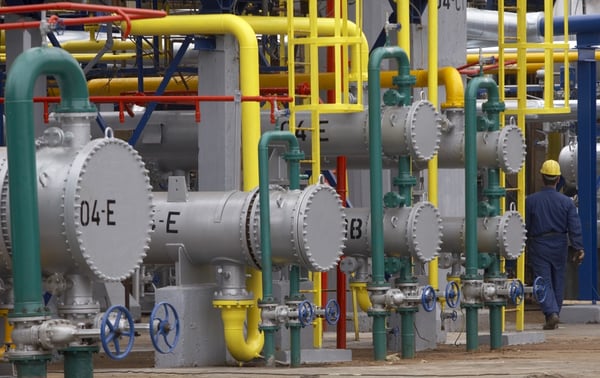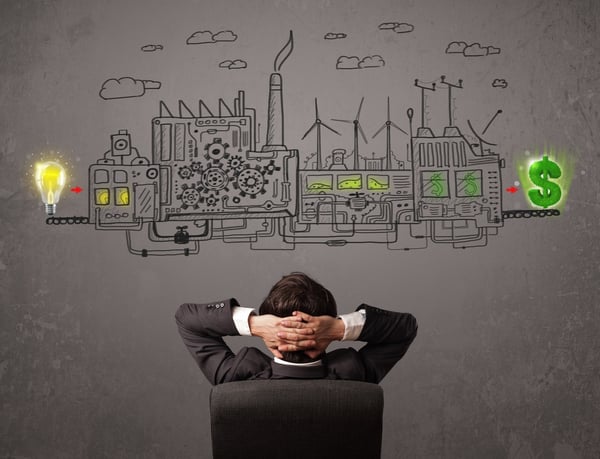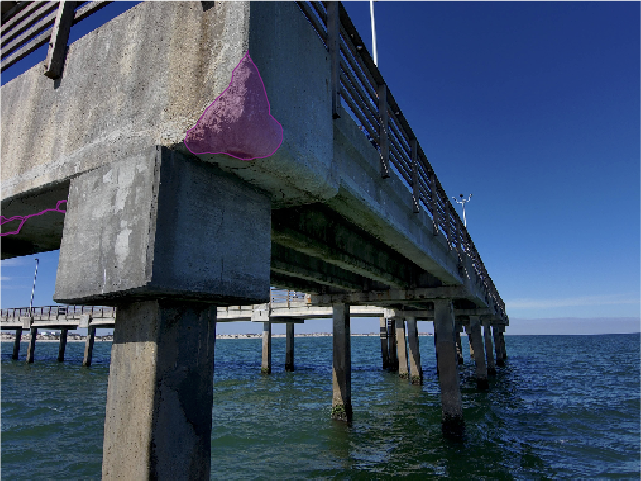The oil and gas products provide energy that drives transportation, manufacturing, power generation, and other industries. Despite transportation moving towards electric vehicles, and technologies such as renewable energy sources like solar, wind, geothermal, and others, the fossil fuels are still the main energy source for a wide range of industries. Unfortunately, the resource is finite and cannot last forever. Other than this, mining and processing the resource has a negative impact on the environment, especially if done poorly.

The industry affects the social and economic aspects of a large number of people. Some of these effects have the potential to impact negatively on current and future generations. Already, emissions and spillages are a major concern due to their environmental degradation that is causing climate change. We are already experiencing global warming due to industrialization, pollution, deforestation and other factors
The future depends on what we do today. Although there are several alternative energy sources other than oil, there are no alternative climates that future generations can live in. It is thus our responsibility to take care and ensure sustainability that will enable future generations to access energy and live healthy.
Sustainability in the oil and gas industry can be thought of as meeting todays and future global energy needs. Without a doubt, petroleum engineers have a big role of ensuring that, in addition to providing the oil and gas products, they must ensure they do it efficiently, safely and with little or no degradation to the environment.
What can petroleum engineers do to improve sustainability?
Some of the petroleum engineers can do include using best practices and modern technologies that allows them to improve efficiency and cut wastage such as spills and gas leaks. In addition, encouraging better use and efficiency of the resources will extend the limited amounts.
Below are some effective approaches petroleum engineers can use to support sustainability.
Optimizing field operations and management
All the actions by petroleum engineers that improve performance and efficiency of the oil production processes contribute to sustainability. Whether it is reducing the spills, emission of methane, or minimizing the footprint, all these impacts positively on the environment and quality of life. It has the potential to enable companies to provide safe and affordable energy without causing significant damages to the environment.
As such, improving the technologies and processes in the drilling, producing and processing products from the wells is a positive measure towards sustainability. Some of the optimization areas include operating at maximum efficiency, producing the maximum number of barrels using fewer wells, lowering water demand and more. Each company must be committed to becoming more efficient, and improve the quality of life without compromising that of the future generations.
To accomplish this, the oil companies must adopt an evolving operational model that will meet today’s dynamic requirements of the industry, without compromising the future. This requires a new approach, new skill sets, and how the staff performs their duties. Companies without the ability to optimize their operations can train their staff and employ better technologies that will aid them in meeting such goals.
Reduce the surface footprint
Drilling several wells from a consolidated cluster reduces the surface footprint as well as the impact on the environment. Instead of drilling a separate vertical hole for each well, as is the case with traditional methods, newer technologies allow combining the vertical and horizontal drilling. Engineers only need to drill one or few verticals concentrated in one area, once they reach a certain depth, they start drilling horizontally until they reach well. One vertical entrance can, therefore, access multiple wells, but the routes are underground instead of the ground surface.
This also enables the sharing of resources, production facilities, and transportation routes. In addition, this approach enables better or efficient use of flow back water. But for this to happen, the engineers need to collaborate with other professionals when designing these wells. This allows them to do it efficiently and eliminate duplicating some facilities and functions.
The vertical and horizontal drilling minimizes the impact on the environment, by reducing the surface footprint and demand for water. It is also cheaper compared to the traditional methods since it allows sharing of resources. When production is concentrated in one pad site, the oil and gas companies will require a smaller surface area, fewer pipelines, and access roads to service the multiple wells.

Ensuring wellbore integrity
Generally, each well is built in a way to prevent its content from migrating from one zone to another or getting other liquids from the surrounding. The construction of a reliable well casing is critical in preventing contamination from others, such as salt water, or other unwanted fluids that would compromise quality, or complicate the processing of the products.
The production casing is usually inserted and cemented into the well. Its inside is isolated from the surrounding using a barrier of cement and steel. This combination prevents contamination from groundwater aquifers while providing stability to the drill hole. Poor construction practices such as inadequate or bad quality cement can lead to collapsing or leaking casing.
Similarly, production casing problems may occur due to aging or degraded cement and other materials. The best approach to retain the fluids in their place is to ensure high-quality constructions as well as regular monitoring of the integrity and address any challenges that may affect the integrity of the well. One of the main and effective approaches is to deploy a real-time structural health monitoring technology such as the distributed acoustic sensing using fiber-optic sensors.
Prevent spills in oil fields
Oil spills have a negative impact on efficiency, environments and people’s lives. These may occur during the oilfield operations, and each oil and gas company must work towards eliminating them. The petroleum engineers should aim at preventing them rather than responding when there are spillages. An effective strategy is to perform regular maintenance and monitoring of the blowout Preventers, which are the primary safety devices. The blowout control device consists of an independent cut-off mechanism that helps to prevent spills and consequently avoid damage to the environment, or risks to lives.
The companies should continuously assess their technologies, equipment, procedures, and operations. They should have in place, proper training, inspections, and maintenance practices as well as effective plans to control or shut down operations when a problem occurs. Consequently, companies require monitoring, inspection, and detection technologies to keep track of what is happening and address any impending issue or defects within the shortest time possible before they become big problems.
Prevent or reduce methane emission
Engineers should look at ways to prevent or reduce methane gas from leaking into the atmosphere. Compared to carbon dioxide, Methane has a greater effect on climate degradation. Although petroleum and natural gas systems are not the largest contributors to the methane emissions, the 29 % they produce is still a significant amount. Other sources of methane include domestic livestock at about 36%, while landfills and coal mining account for 28%.
Emissions from oil and gas industry have been declining over the years, despite an increase in production, processing facilities, and pipelines. However, there is still more that can be done. One way of improving on this and eliminate methane emissions further is to have efficient production, processing, and transportation infrastructure. In particular, the companies can use modern inspection and monitoring technologies such as drones and robots to provide real-time or regular inspection reports. This enables early detection and ability to rectify issues, hence prevent emissions from occurring.
Eliminate or reduce the flaring
Flaring is a process at the oil and gas fields where unrecoverable natural gas is burnt and resulting carbon dioxide released into the atmosphere. Burning the natural gas prevents releasing methane, which is more harmful to the atmosphere that the resulting carbon dioxide.
Although done in a controlled process, flaring contributes to environmental degradation, noise, and other negative effects. Other than carbon dioxide, impurities in the natural gas may cause other emissions such as nitrogen and sulfur oxides which lead to acid rains. It is therefore important for the oil companies to reduce or eliminate the process completely. In most cases, some companies cite lack of processing and transporting infrastructure for the gas.
However, petroleum engineers should turn to modern technologies and follow best practices to increase efficiency of flaring and reduce its frequency. If possible, they should aim at completely eliminating flaring at the oil fields. Gases burnt in flaring account for about 3% of useful energy wasted. So, in addition, to climate change, the oil companies also lose the revenue they could earn through extracting and selling the natural gas instead of flaring.
Some of the innovative practices include re-injecting gas, using the gas locally, such as in generating electricity, manufacturing cooking gas, etc.
Conclusion
The oil and gas, as well as other industries, should have sustainability goals that address social, economic and environmental challenges that the world is likely to face in future. The climate change continues to be a problem due to poor handling of our natural resources, pollution from industrial and other activities such as releasing harmful gases to the environment. Deforestation and increased global populations continue to put pressure on existing land, fresh water, and other resources.
Despite these challenges, there is much that people can do to at least reduce further degradation and ensures a better future. Sustainability doesn’t mean extracting oil and gas indefinitely since the wells will eventually dry up at some point. Rather, it means sustaining the human existence for present and future generations. In particular, it requires careful balance between the economic, social and environmental factors in a dynamic world.
Tags
Oil and Gas

.png)
